Climate
-
Temperature
14-40°C -
Rainfall
2500mm -
Sowing temperature
20-25°C -
Harvesting temperature
10-40°C
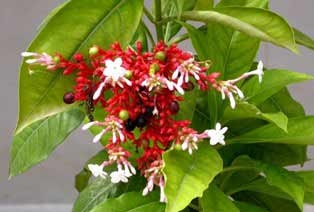
















Because of its hardy nature it is grown in variety of soil type ranging from red lateritic loamy soil to sandy alluvial loamy soil. It gives best result when grown under soil rich with humus and nitrogenous substance having organic matter with good drainage system. It can tolerate moderate clayey soil and clay loamy soil. It grows best when pH of soil ranges from 4.6-6.5.
R.S.1: Developed by Jawahar Lal Nehru Krishi Vishwa Vidyalaya. The variety contains seed viabiltiy @50-60% and gives yield @10q/dry roots/acre.
For Sarpagandha plantation, it requires well prepared land. To bring soil to fine tilth, repeated ploughing is done. After tilling and ploughing the land is given manures, nutrients and growth promoters to enrich the soil.
Time of sowing
If propagation is done through seeds then cultivation is done in the month of April–June, if propagation is by stem cutting then cultivated in June month, if propagation is by root cutting then cultivated in March-June month and if propagation is by root-stump then cultivation is done in the month of May-July.
Spacing
Depending upon plant growth habit, use spacing of 30 x 30cm.
Method of sowing
Direct sowing of seeds or transplanting seedling/stem cuttings or root cutting in main field.
Seed Rate
For good growth of plant, use seedling rate of 32,000 – 40,000/acre.
Seed treatment
To protect crop from fungal disease such as damping off disease, before transplanting firstly soak the seeds in water for 24 hours and then do treatment by dipping seedlings in fungicidal solution i.e Thiram@2-3gm/kg of seeds. After chemical treatment use the seedling for plantation.
Sow Sarpagandha seeds on raised beds of 1.5 widths, 150-200mm height and of convenient length. Nursery beds are sown in the month of April and are irrigated first before sowing. Germination of seedlings starts within 30-35 days.
Transplanting is done in the month of first week of July when the seedlings are 40-50 days old having 4-6 leaves. Transplanting is done in main field at the distance of 30 x 30cm. After transplanting light irrigation is done.
To protect crop from soil borne diseases, dip seedlings in Bavistin@0.1% for 30 mins before transplanting.
Fertilizer Requirement (kg/acre)
| UREA | SSP | MOP |
| 18 | 75 | 20 |
Nutrient Requirement (kg/acre)
| NITROGEN | PHOSPHORUS | POTASH |
| 8 | 12 | 12 |
At the time of land preparation apply FYM (Farm Yard Manure)@10 ton/acre and mix well with soil. Fertilizer dose of N:P:K @8:12:12Kg/acre is applied as a basal dose in form of Urea@18kg, SSP@75 and MOP@20kg/acre. Apply Nitrogen dose of 8kg two times during growing season of Sarpagandha.
In summer, apply two irrigations at monthly interval and in winter month, apply four irrigations at monthly interval. In hot dry season irrigation is done every fortnight.
Do weeding followed by hoeing to keep the field weed free. In initial i.e. first year two weedings are done and in next i.e. second year one weeding followed by one hoeing is done at growing period of plant.If flowering starts in initial period, flowers should be nipped to raise root growth.
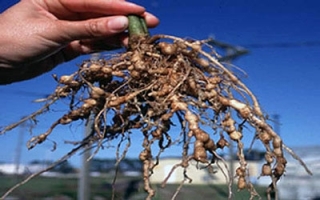
Root knot nematode: The infection is caused by Meloidogyne incognita and Meloidogyne hapla. The symptoms are stunted growth and decrease in leaf size.
Application of 3G Carbofuran@10kg/acre or 10 G of Phorate granules@5kg/acre will help to control them.
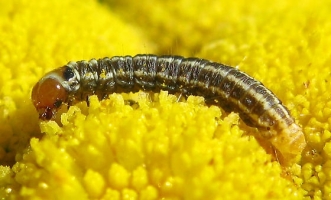
Pyralid caterpillar: The infection is caused by Glyphodes vertumnalis. The symptoms are rolling of leaves and defoliation of leaves. It feed themselves on green leaves results in damage of leaves.
Spraying of Rogor@0.2% is used to control pests.
Cockhafer grubs: The infection is caused by Anomala polita. The symptom is seedling attack and then gets dried.
Application of phorate granules mixed well with soil is done at the time of land preparation to control the pests.
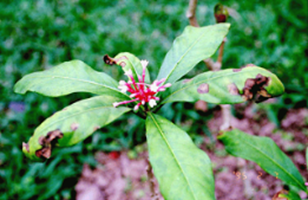
Leaf spot: The symptoms are brown colored spots on upper and lower surface of leaves. The leave first become yellow then gets dried and then falls off.
Application of Dithane M-45@0.2% is given at monthly intervals until November to control disease.
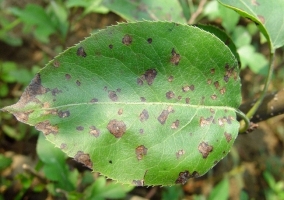
Alternaria tenuis: The symptom is dark brown colored leaf spots.
Spraying of Blitox@30g in 10 litre of water is done to control diseases.
Plant starts yielding by 2-3 years after plantation. Harvesting is done during winter month as the plant become dormant. Root harvesting is mainly done. For better uprooting, before harvesting irrigation is done. For processing, dried roots are used.
After harvesting, cleaning is done. Roots are first cut and then they are air-dried. The dried roots are packed in airtight bags for better transportation and to increase its self-life. From dried roots several product like powder, tablets, ghanavati, yoga and mahesvari vati are made after processing.
It is an important crude drug used for making modern medicines and ayurvedic medicines. Its roots emit a characteristic aroma but are bitter in taste. Its roots are used for preparing various drugs. Drugs prepared from Sarpagandha are used to treat wounds, fever, colic, urinary retention, insomnia, hypertension, epilepsy and insanity. It is a shrub having average height of 0.3-1.6m. Leaves are oblong and are 8-15cm long. Flowers are white or rose color, fruits are purplish black in color and roots are 0.5-3.6cm in diameter. Burma, Bangladesh, Malaysia, Sri Lanka, Indonesia and the Andaman islands are major countries growing Sarpagandha. In India Uttar Pradesh is major Sarpagandha growing state.
You have successfully login.
Your email and password is incorrect!